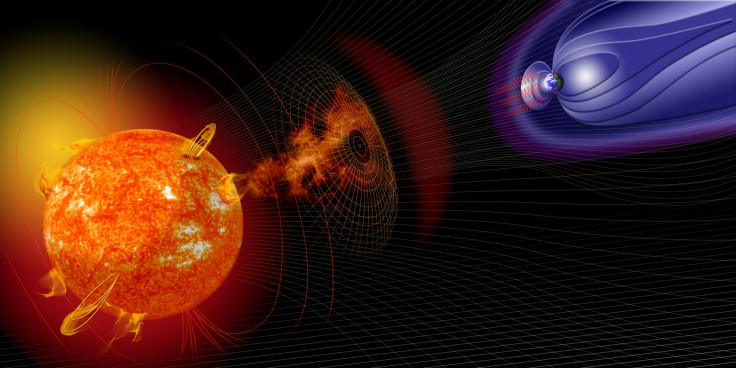'Canyon-like' Hole In The Sun May Cause Solar Storms On Friday [Photo]
KEY POINTS
- The storm will likely be a G1 class minor storm
- It might lead to minor fluctuations in power grids and weaken satellite functions
- An aurora might appear as far south as Michigan and Maine
A canyon-like hole is visible in the Sun that is expected to shoot solar particles toward Earth causing a minor solar storm that could disrupt GPS services.
The storm will likely be a G1 class minor storm that might occur on Friday, according to Spaceweather.com. The gaseous material flowing from the 'canyon-like' hole is the source of this likely solar storm.
The huge solar void in the center of the Sun is due to comparatively less hot and dense plasma in the upper atmosphere, which makes it appear black against the solar background.
A 'canyon-like' hole in the sun could send a solar storm to us as early as Thursday (Dec. 1) https://t.co/XGOKNPakaP
— Live Science (@LiveScience) November 29, 2022
What makes these solar holes unique is that the magnetic field near these holes, instead of looping back on itself, shoots forward toward space, according to the Exploratorium, a science museum in San Francisco. The solar material beams outwards at up to 1.8 million mph.
These beams hitting the Earth's atmosphere are directed toward the poles, where they agitate molecules present in the atmosphere, and create visually pleasing auroras in the sky.
The solar debris gets absorbed by the Earth's magnetic field causing compression and subsequently a geomagnetic storm.
Although the storm is predicted to be weak, it might lead to minor fluctuations in power grids and weaken some satellite functions, including those for mobile devices and GPS services, reported LiveScience.
Skywatchers may be treated with an aurora that might appear as far south as Michigan and Maine.
Besides coronal holes, solar storms can be caused by two other solar activities -- coronal mass ejections (CMEs) or solar flares. CMEs usually take around 15 to 18 hours to reach Earth, according to the Space Weather Prediction Center. Solar flares, on the other hand, traveling at the speed of light, take 8 minutes to reach Earth.
This storm is yet another solar attack in a series of solar storms that have struck Earth as the Sun prepares to move toward the most active phase of its 11-year solar cycle.
In other news recently, the European Space Agency (ESA) Solar Orbiter managed to capture video of the Sun's corona at a higher resolution than ever.
"As if trying to get the orbiter's attention as it cozied up to another body in the Solar System, the Sun flung an enormous 'coronal mass ejection' straight at the spacecraft and planet just two days before their closest approach," the agency said. "This movie, and others taken during the encounter, show the dynamic nature of the Sun's million-degree-hot corona. The electrically charged gas here, known as plasma, is in constant motion, guided and accelerated by changes of the Sun's magnetic field."

© Copyright IBTimes 2024. All rights reserved.





















